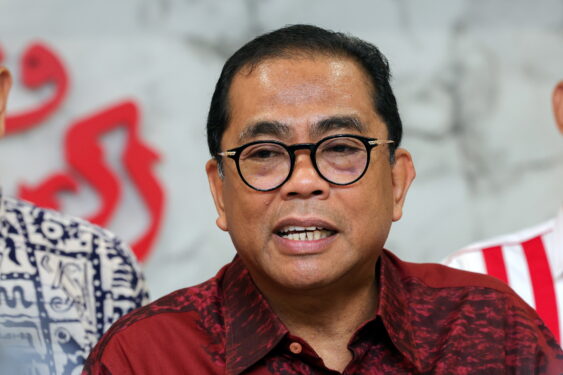CENTRAL banks – after all their ultra-monetary stimulus and liquidity injection to stem the pandemic-induced economic recession in 2020 – face many challenging tasks ahead as the global recovery gains traction.
While ensuring that global recovery is sustained, central bankers have to anchor inflation expectations and address the risk of financial vulnerabilities build up.
We reckon that accommodative monetary stance is still needed but it has to be pragmatic and prudent. The rollback of monetary stimulus, including the normalisation of interest rate path must be appropriately timed. The future path of interest rate normalisation will require clear and predictable policy communication to smooth the ride.
The continued high inflation in some advanced countries and emerging countries have stirred concerns over whether the elevated price pressures will be transitory or will persist to drive higher inflation expectations.

The COVID-19 pandemic inflicted supply constrictions, rising cost of raw materials, higher commodity prices, weak currencies, resurgent economic activity post the re-opening of the economy, and supply chain disruptions had led to price pressures.
A combination of these factors will determine whether the cost pressures and their ensuing impact on consumer inflation will persist and stay elevated – and not transitory in nature as some factors have longer staying power than others.
We caution that these factors can become persistent enough to feed into inflation expectations and create self-sustaining inflationary dynamics.
Balancing act
Temporary shocks/forces do not necessarily drive inflation higher unless they become embedded in the price-setting mechanism, leading to rising inflation expectations. The return of cost-push inflation could trigger wage-price spirals though the demand-pull inflation is not apparent at this juncture amid some pick up in wages.
Historical experience suggests that inflationary episodes are generally accompanied by periods of accelerating nominal wages. If inflation surprises on the upside and financial conditions tighten, central banks’ prompt monetary response is needed.
They have to stay ahead of the curve by signalling readiness to move towards the normalisation of interest rate ahead. The expectations of tighter monetary stance would trigger bouts of high volatility and tension in markets.
Certain emerging market central banks are already tightening policies to contend with rising inflationary pressures. Amid a growing number of policymakers worried that high inflation could persist longer than anticipated, the US Federal Reserve has announced that the tapering of its asset purchase programme (QE) will begin at a reduction pace of US$15 bil per month in November and December 2021.
The planned pace of tapering would conclude by mid-2022 followed by measured pace of interest rates hiking depending on the economic outlook.

Contain spiralling cost
Malaysia is unlikely to experience stagflation as the economic growth will increase post pandemic amid rising inflation risk. Headline inflation hit a high of 4.7% year-on-year (yoy) in April 2021 before moderating four months in a row to 2% in August.
It edged higher to 2.2% in September and will likely to average higher at 2.8% in 4Q 2021. Energy inflation is a notable contributor to overall higher inflation due in part to the substantial base effect.
Business cost pressures will intensify and consumer inflation is likely to pick up in 2022 due to the following factors and drivers:
- Business cost and domestic price pressures are increasingly a concern. Besides rising energy and food prices, inflated shipping, logistics and delivery costs as well as raw material costs that have weighed on businesses’ costs and margins could also be passed onto consumers via higher prices, especially if demand persists.
On the external front, disruptions to global food production and consumer goods supply chains will likely take time to ease. - As the domestic economy reopens and private consumption picks up, these accumulating business costs will be passed onto consumers if businesses and manufacturers are unable to absorb increased costs.
It is observed that the food and beverage sector is raising menu prices; the prices of furniture and wearing apparels have increased while the semiconductor chip shortages has led to a sustained firming of consumer electronics prices.
Even the nationwide Eco-shop has announced 10 sen increase in prices to RM2.20 from RM2.10 in Peninsula Malaysia (and to RM2.40 in Sabah and Sarawak) starting Dec 1. - The Producer Price Index (PPI) which measures the average change over time in the selling prices received by domestic producers for their output has been increasing by double-digit rates since April (+10.6% yoy) to 11.3% in August.
Large increases in prices were reflected in crude materials for further processing (between 30.9% and 55.8% during the review period); and intermediate materials, supplies and components (between 4.8% and 11.2%).
Higher input costs and the shortage of workers are affecting companies and industries very differently depending on their ability to pass on cost increases and supply constraints. - Another wild card is oil price movements which could exert price pressure if the Government decides to tweak the fuel subsidy in 2022. In 2021, fuel subsidy is estimated to cost RM8 bil. In addition, the eventual tapering or removal of utility discounts and cooking oil subsidies could add some pressures on inflation and cost of living.
- The risk of a wage-price spiral is low given still-high unemployment rate and the presence of slack capacity. Nevertheless, the shortage of workers in some sectors are bidding up wages of foreign workers.
In ensuring an entrenched economic recovery in 2022 amid the downside risks to growth, we expect Bank Negara Malaysia’s (BNM) monetary policy guide to stress growth priority, re-assert its commitment to nurse the Malaysian economy back to health from the scarring economic impact of the COVID-19 pandemic.
BNM’s rate-setting committee is likely to look past supply-side factors and disruptions-induced price pressures by keeping the overnight policy rate (OPR) at 1.75% for the greater part of 2022.
The ringgit may have to brace for near-term weakness against the greenback as the US Government bond yields will generally rise more than those elsewhere over the next few quarters and this will push the US dollar higher against most currencies in emerging markets.
Most emerging markets’ central banks are expected to tighten monetary policy gradually. – Nov 19, 2021










